ALSO BY THE AUTHOR
Under the Tuscan Sun
Bella Tuscany
In Tuscany
Swan
Bringing Tuscany Home
A Year in the World
Ex Voto
The Discovery of Poetry
FOR WILLIE
Acknowledgments
F OR SO MUCH PLEASURE along the way, my love and thanks to Ed, Ashley, and Willie. Eds adventures and fun in the kitchen stand behind many of the recipes, and our passion for Italy is so entwined that these pages are as much his as mine. Ashleys acute and perceptive reading and Willies gusto di vivere contributed to the joy of writing these pages.
Due baci to: Alberto, Tony, Carlos and the whole Alfonso family, Melva and Jim Pante, Sheryl and Rob Turping, Catherine and Jim McLaughlin, all Cortona natives by now. My Italian friends are portrayed in these pages, but no words can capture their grace and warmth. Special love to the Di Rosas, the Cardinali, the Baracchi, and the Calicchia families. Gilda Di Vizio, Albano Fabrizi, Giorgio Zappini, Domenica Castelli, and Ivan Italianimany thanks. Architect Walter Petrucci and master-builder Rosanno Checcarelli showed me just how easy a building project can be and enhanced my knowledge of Tuscan vernacular architecture.
Throughout the writing of seven books, Ive had the luck to work with Peter Ginsberg of Curtis Brown Ltd. Hes a paradigm of his profession and a good friend. And with us all the way has been Charlie Conrad of Broadway Books, extraordinary editor and Italophile. Thank you, Rachel Rokicki, my publicist at Broadway, and the whole team, especially Jenna Ciongoli and Julie Sills. My gratitude to Dave Barbor, my foreign rights agent, to Nathan Bransford and Grace Wherry of Curtis Brown, to Fiona Inglis of Curtis Brown Australia, and to Nikki Christer of Transworld, also in Australia. Mille grazie, Albert (Secondo) Hurley. I happened to be around when he climbed the bell tower and took the cover photograph that so nicely fit the end of my book. My thanks to Becky Cabaza and to the book designer, Lauren Dong. Photographer Steven Rothfeld and I have worked on many projects together with wonderful synergy. Grazie, Stefano. Also a big thank-you to Linda Pastonchi and Elizabeth Shestak for manuscript assistance.
I was honored to receive the Premio Internazionale Casato Prime Donne. My great appreciation to the jury and to Donatella Cinelli Colombini for this award and for placing lines from this book on a vineyard path.
Our kitchen has benefited from knowing many chefs. I especially thank Silvia Regi, Marco Bistarelli, Nicola Borbui, Eva Seferi, and Andrea Quagliarella for sharing their talents and recipes. Also I would like to pour a glass of Brunello for Marco Molesini, Junas Moncada Cancogni, Silvio Ariani, Giuseppe Frangieh, Mario Ponticelli, and Lapo Salvadori.
My special thanks to the editors of publications and producers of lecture venues where I first tried out much of the material in this book:
El Pais (Madrid), Town and Country Travel, Waterstone (England), Signature, Inside Borders, Real Simple, Taiwan Vogue, Powells Q & A, Casa Claudia (So Paulo), Elle Brazil, O Estado de So Paulo, Financial Times, Metro, Toronto Star, Gainesville Magazine, Inspire (Singapore), The Sun Times (Singapore), The Straits Times (Singapore), Silver Kris (Singapore), The Durham News and Observer, Journal News, and Points North Magazine.
The Smithsonian Program, Detroit Institute of Art, Nashville Antiques and Garden Show, Dallas Museum of Art, New York University at La Pietra in Florence, Cortona Wine Consortium, Tuscan Sun Festival, Florida Southern College, Hillsborough Literary Society, the Junior League of San Diego, Chapel Hill Historical Society, Impact Programs for ExcellenceEl Paso, University of NebraskaOmaha, Salt Lake City Public Library, Campbell Foods, Lane Public Library, Fayetteville Public Library, Denver Post Pen and Podium, Northeastern University, Society for the Performing ArtsHouston, Suffolk University, Vero Beach Museum of Art, Palace TheatreWaterbury, Atlanta Girls School, St. Johns University, Indiana University, Los Angeles Times Book Festival, Sacramento Bee Book Club, Denver Press Club, and Seeds (South Eastern Efforts Developing Sustainable Spaces). For arranging many of these events, where I met so many great people, I thank everyone at the Steven Barclay AgencyCatherine, Eliza, Sara, and my friend for many years, Steven Barclay.
I deeply appreciate my new literary friendships at home in North Carolina and am sending special saluti to Lee Smith, Michael Malone, Maureen Quilligan, Oscar Hijuelos, Lori Carlson, Alan Gurganus, and, farther south in Alabama, the painter Rena Williams, a lifelong friend.
Contents
P ART 1
P ART 2
INTRODUCTION
The White Road
 I AM ABOUT TO BUY A HOUSE IN A FOREIGN country, I wrote as I began my memoir, Under the Tuscan Sun. A simple declarative sentencebut for me, crux and crucible. From such easy words, fate branches and transforms. Bramasole, an abandoned country house beneath the Etruscan city wall of Cortona, became home. And more than homebulls eye, hearts needle, center of my private universe.
I AM ABOUT TO BUY A HOUSE IN A FOREIGN country, I wrote as I began my memoir, Under the Tuscan Sun. A simple declarative sentencebut for me, crux and crucible. From such easy words, fate branches and transforms. Bramasole, an abandoned country house beneath the Etruscan city wall of Cortona, became home. And more than homebulls eye, hearts needle, center of my private universe.
At the moment I turned the heavy iron key in the door and stepped into my Italian life, I could not have pictured myself here two decades later, could not have foreseen the pleasure, complexity, hassle, frustration, joy, or my intense love for Bramasole, a place-in-time that took over my life.
In Juan Rulfos novel, Pedro Pramo, his character on a hot bus ride carries a photograph of his mother in his breast pocket. I could feel her beginning to sweat, Pedro thinks. Bramasole seems like that for me. I can sense its life within my life, separate and integral.
The house became my icon. The luminous apricot-rose facade, shuttered windows open to the southern sun, profuse geraniums, clematis, lemons, and lavender burgeoning in the gardenall this exuberant beauty symbolizes not the life I was given but the life I made with my own two hands. Opening my study window and leaning out into the bright air, I can see the garden below, even greet each rose by name. I watch for the jasmine to overwhelm the iron arch with blooms. I listen to the four musical notes of water cascading in the ancient cistern. I see all the overlays of the years, from when the walls were tumbled and the blackberries choked the land, until now, when the garden rhymes roses, lilacs, dahlias, and lilies with secret reading spots among the olives. The only traces of the houses original formal garden still reign: five wise topiary trees rising from a boxwood hedge.
Across the top terrace hundreds of giant sunflowers hold court in July, my little marching band of glorious faces. By August, they bow, like too many rusty showerheads. At that moment, pheasants arrive. How do they know? The seeds are a feast and their cranky cries of gluttony sound more like noise at a car repair shop than the orgy of regally feathered fowl.

I NSIDE THE HOUSE , I have my books, my collections of religious folk art, ceramic platters, old linens, and, by now, boxes of manuscripts in innumerable, crossed-out, underlined, scrawled drafts. My rooms are fingerprints. My husbands wild study, where a painting of Dante looks down on the poetry-strewn, chaotic desk; our bedroom with the romantic iron bed draped in white linen; the kitchen where all my pottery hangs on white walls; the houses original bathroom with the hip tub; the dining room where wineglasses are always half full and chairs have scraped the brick floors at so many feasts under the faded blue and apricot fresco we discovered long agothe house lives powerfully on its own and I feel powerfully alive within its thick stone walls.


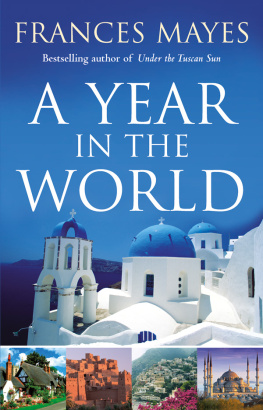
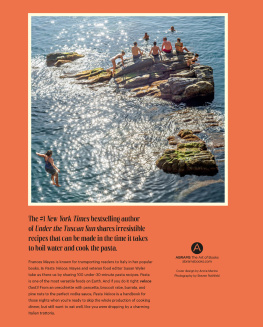
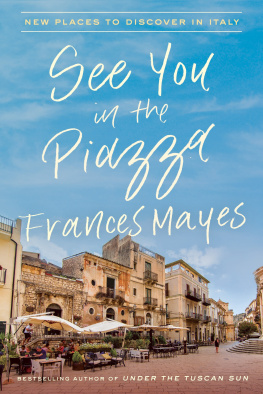
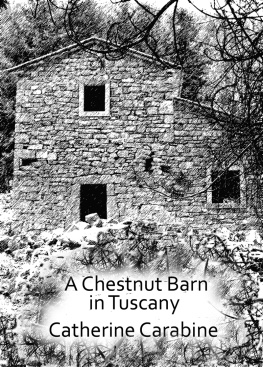
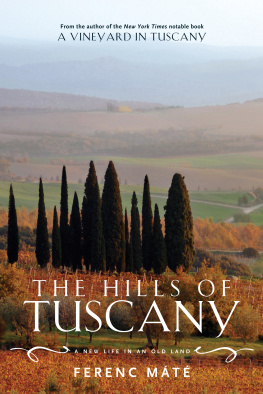
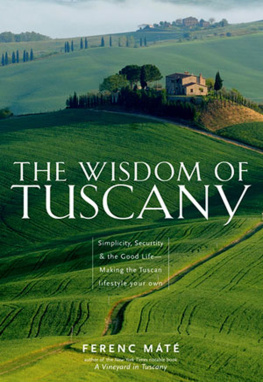
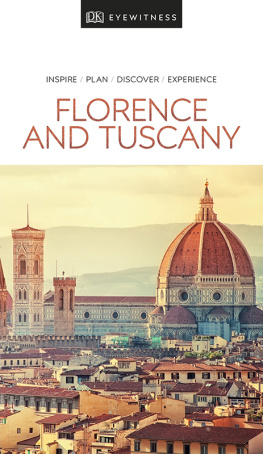
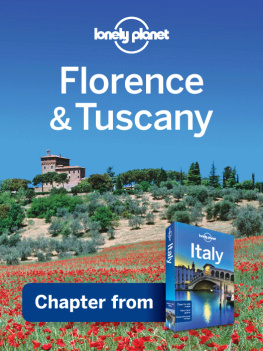
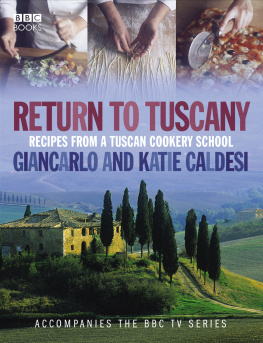
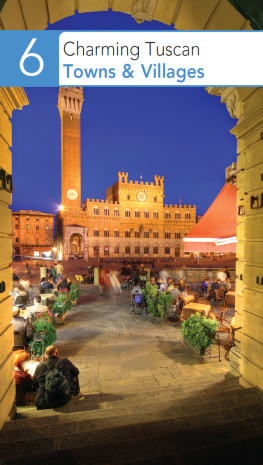
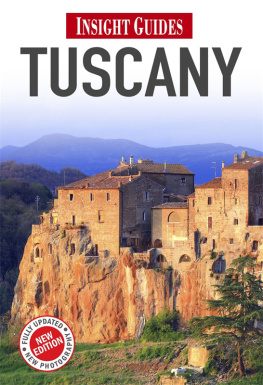
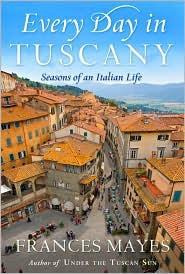
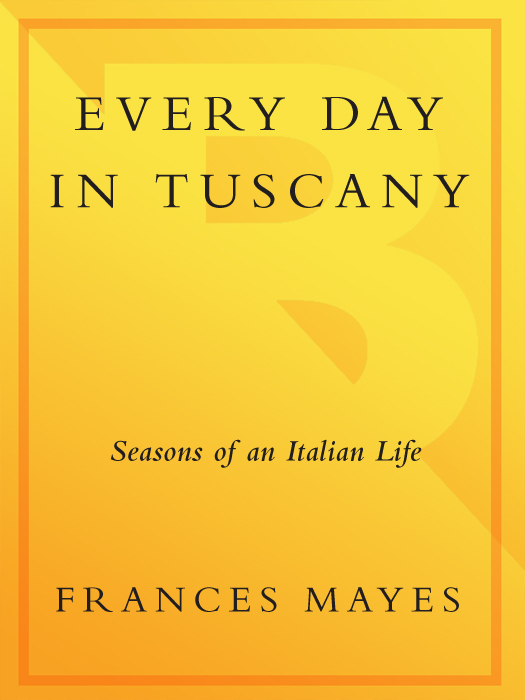
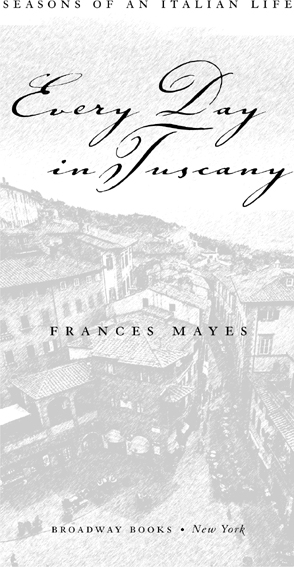
 I AM ABOUT TO BUY A HOUSE IN A FOREIGN country, I wrote as I began my memoir, Under the Tuscan Sun. A simple declarative sentencebut for me, crux and crucible. From such easy words, fate branches and transforms. Bramasole, an abandoned country house beneath the Etruscan city wall of Cortona, became home. And more than homebulls eye, hearts needle, center of my private universe.
I AM ABOUT TO BUY A HOUSE IN A FOREIGN country, I wrote as I began my memoir, Under the Tuscan Sun. A simple declarative sentencebut for me, crux and crucible. From such easy words, fate branches and transforms. Bramasole, an abandoned country house beneath the Etruscan city wall of Cortona, became home. And more than homebulls eye, hearts needle, center of my private universe.